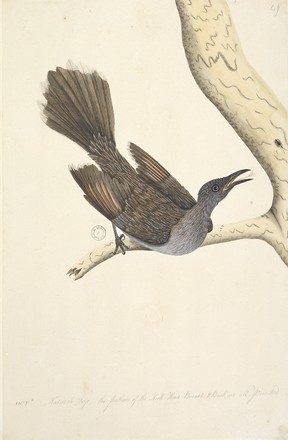
Brush wattle-bird (Anthochaera chrysoptera), 1790s
Mitchell Library, State Library of NSW; Purchased 1887; PXD 226, f. 58
Watercolour

Mitchell Library, State Library of NSW; Purchased 1887; PXD 226, f. 58
Watercolour